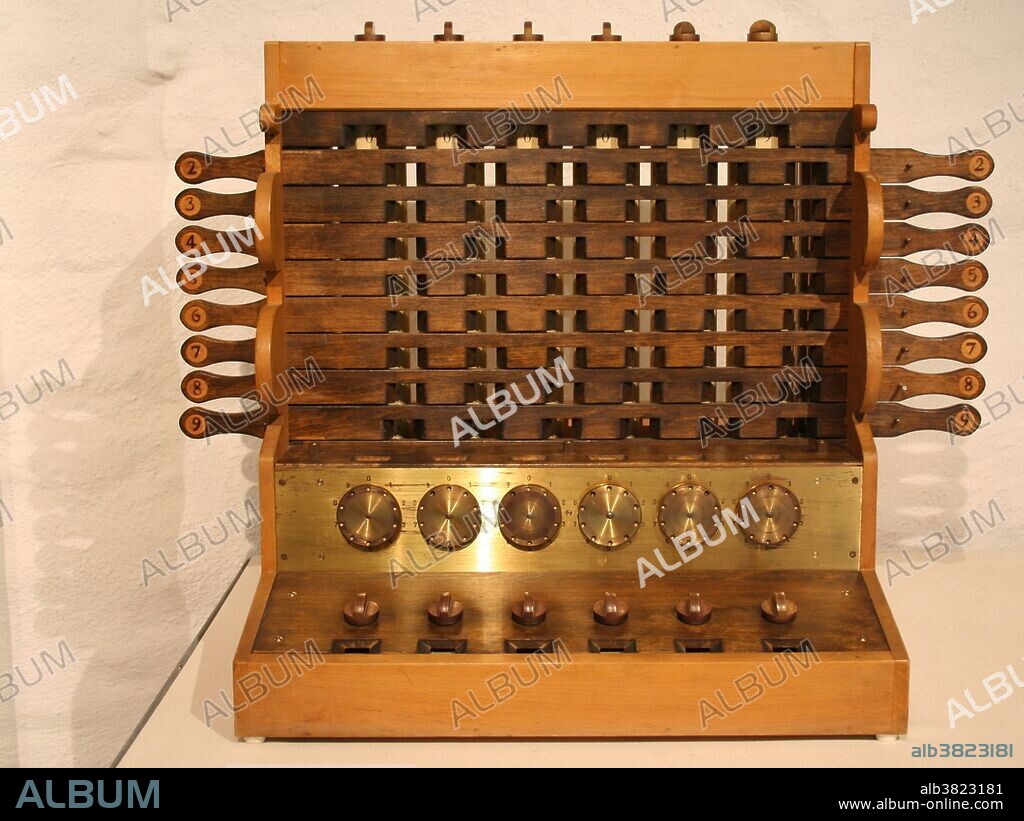alb3823181
Replica of Schickard's Calculating Clock

|
Add to another lightbox |
|
Add to another lightbox |



Buy this image.
Select the use:

Title:
Replica of Schickard's Calculating Clock
Caption:
In 1623 and 1624, Wilhelm Schickard, in letters that he sent to Kepler, reported his design and construction of what he referred to as an "arithmeticum organum" (arithmetical instrument) that he has invented, but which would later be described as a Rechenuhr (calculating clock). The machine was designed to assist in all the four basic functions of arithmetic (addition, subtraction, multiplication and division). The machine could add and subtract six-digit numbers, and indicated an overflow of this capacity by ringing a bell. The adding machine in the base was primarily provided to assist in the difficult task of adding or multiplying two multi-digit numbers. To this end an ingenious arrangement of rotatable Napier's bones were mounted on it. It even had an additional "memory register" to record intermediate calculations. Schickard hired a professional, a clockmaker named Johann Pfister to build a finished machine, but it was destroyed in a fire. Schickard abandoned his project soon after. He and his entire family were wiped out in 1635 by bubonic plague during the Thirty Years War.
Category:
TECHNOLOGY • History: Early Modern
Credit:
Album / Science Source
Releases:
Image size:
4200 x 3150 px | 37.9 MB
Print size:
35.6 x 26.7 cm | 14.0 x 10.5 in (300 dpi)
Keywords:
1623 • 1624 • 17TH CENTURY • ADDING MACHINE • ADDITION • ALL FOUR ARITHMETIC OPERATIONS • APPARATUS • ARITHMETICAL INSTRUMENT • ARITHMETICS • ARITHMETICUM ORGANUM • CALCULATING CLOCK • CALCULATING MACHINE • CALCULATION • CALCULATOR • CELEBRITIES • CELEBRITY • COMPUTER HISTORY • COMPUTING HISTORY • DEVICE • DIVISION • FAMOUS PEOPLE • FAMOUS • FATHER OF THE COMPUTER AGE • FATHER OF THE COMPUTING AGE • HISTORIC • HISTORICAL • HISTORY • HISTORY: EARLY MODERN • IMPORTANT • INSTRUMENT MACHINE • INVENTION • MATH • MATHEMATIC • MATHEMATICS • MODEL • MULTIPLICATION • NOTABLE • REPLICA • SCHICKARD • SCIENCE • SUBTRACTION • TECHNOLOGICAL • TECHNOLOGY • WELL-KNOWN • WILHELM SCHICKARD
 Pinterest
Pinterest Twitter
Twitter Facebook
Facebook Copy link
Copy link Email
Email
